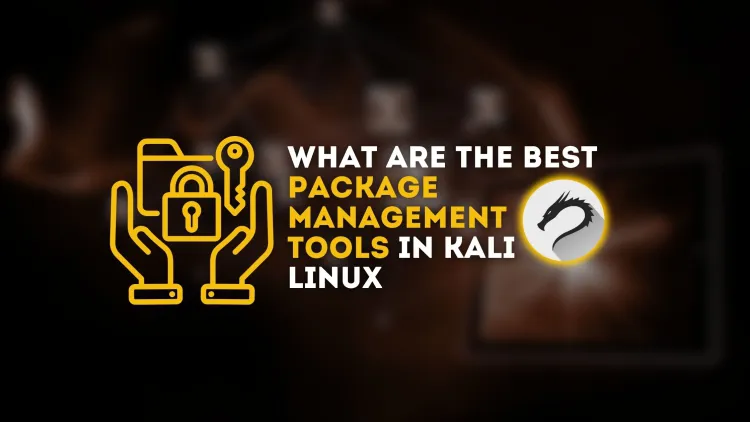What Is Package Management in Linux and How Does It Work? Working Types and Benifits
Package management is a core feature of Linux that simplifies software installation, updates, and maintenance by leveraging tools like APT, YUM, and DNF. It ensures efficiency, security, and compatibility across different distributions, empowering users to manage their systems seamlessly. Understanding how package management works is crucial for maintaining a robust and secure Linux environment.

Linux is one of the most versatile and widely-used operating systems in the world. At the heart of Linux's flexibility is package management, a system that enables users to install, upgrade, and manage software efficiently. Whether you’re an experienced administrator or a beginner, understanding Linux package management is essential for maintaining a smooth and secure system.
What Is Package Management in Linux?
Package management refers to the process of handling software packages in a Linux environment. These packages contain compiled code, configuration files, dependencies, and metadata required for a program to function.
Linux distributions, such as Ubuntu, Fedora, or Arch, rely on package managers to simplify software installation and maintenance. These tools ensure that dependencies are resolved, versions are compatible, and system integrity is preserved.
Key Components of a Package Management System
- Package: A collection of files and metadata needed for software.
- Repositories: Online storage locations where packages are stored.
- Package Manager: A tool that manages the installation, updates, and removal of packages.
How Does Package Management Work?
1. Installation
Package managers retrieve software packages from repositories. You simply provide the package name, and the manager downloads and installs it along with its dependencies.
Example:
- In Debian-based systems:
sudo apt install package_name - In Red Hat-based systems:
sudo yum install package_name
2. Dependency Management
Dependencies are other software libraries or components required for a program to function. Package managers resolve these dependencies automatically.
3. Upgrades
Package managers help update software to newer versions while ensuring compatibility. Users can upgrade individual packages or the entire system.
Example:
sudo apt upgrade(Debian-based systems)sudo dnf update(Fedora-based systems)
4. Removal
When software is no longer needed, package managers remove it cleanly without leaving unnecessary files.
Example:
sudo apt remove package_namesudo pacman -R package_name
Types of Package Managers in Linux
Linux distributions use different package managers, depending on their design and philosophy. Here’s an overview:
1. DEB-Based Systems
- Package Manager: APT (Advanced Package Tool)
- Used By: Debian, Ubuntu, and their derivatives
- File Format:
.deb
2. RPM-Based Systems
- Package Manager: YUM, DNF, or Zypper
- Used By: Fedora, RHEL, CentOS, SUSE
- File Format:
.rpm
3. Source-Based Systems
- Package Manager: Portage
- Used By: Gentoo
- File Format: Source code compiled locally
4. Universal Package Managers
- Examples: Snap, Flatpak, AppImage
- Purpose: Distribute software across multiple Linux distributions without dependency issues.
Benefits of Package Management
- Efficiency: Automates installation and updates.
- Security: Ensures software comes from trusted repositories.
- Consistency: Manages dependencies to prevent conflicts.
- Convenience: Simplifies software removal and upgrades.
Best Practices for Package Management
- Use Trusted Repositories: Always install software from official or trusted sources.
- Keep the System Updated: Regular updates ensure you have the latest security patches.
- Check Dependencies: Avoid manually installing packages outside the package manager unless necessary.
- Backup Before Major Updates: System upgrades can sometimes cause compatibility issues.
- Monitor Disk Usage: Remove unnecessary packages to free up space.
| Task | Command (Debian/Ubuntu) | Command (Fedora/Red Hat) |
|---|---|---|
| Install a package | sudo apt install |
sudo yum install |
| Update repositories | sudo apt update |
sudo yum check-update |
| Upgrade packages | sudo apt upgrade |
sudo yum update |
| Remove a package | sudo apt remove |
sudo yum remove |
Conclusion
Package management in Linux simplifies the process of software installation, updates, and maintenance, making it accessible for users of all skill levels. By mastering package management tools, you can ensure a secure, efficient, and stable Linux environment.
FAQs
-
What is package management in Linux?
Package management refers to the process of installing, updating, and maintaining software on Linux systems. -
What are the common package managers in Linux?
Examples include APT for Debian-based systems, YUM and DNF for RPM-based systems, and Portage for Gentoo. -
What is a Linux repository?
A repository is an online storage location where software packages are stored. -
How do I install software on Linux?
Use a package manager likesudo apt install package_name(Debian) orsudo yum install package_name(Red Hat). -
What are dependencies?
Dependencies are additional software components required for a program to run. -
What is the difference between APT and YUM?
APT is used in Debian-based systems, while YUM is used in RPM-based systems. -
What happens if a dependency is missing?
The package manager will either install the dependency or show an error. -
Are universal package managers reliable?
Yes, tools like Snap and Flatpak ensure compatibility across distributions. -
How do I remove unused packages?
Use commands likesudo apt autoremove(Debian) orsudo yum autoremove(Red Hat). -
Why should I keep my system updated?
Regular updates ensure security, bug fixes, and feature improvements.











![Top 10 Ethical Hackers in the World [2025]](https://www.webasha.com/blog/uploads/images/202408/image_100x75_66c2f983c207b.webp)



![[2025] Top 100+ VAPT Interview Questions and Answers](https://www.webasha.com/blog/uploads/images/image_100x75_6512b1e4b64f7.jpg)







